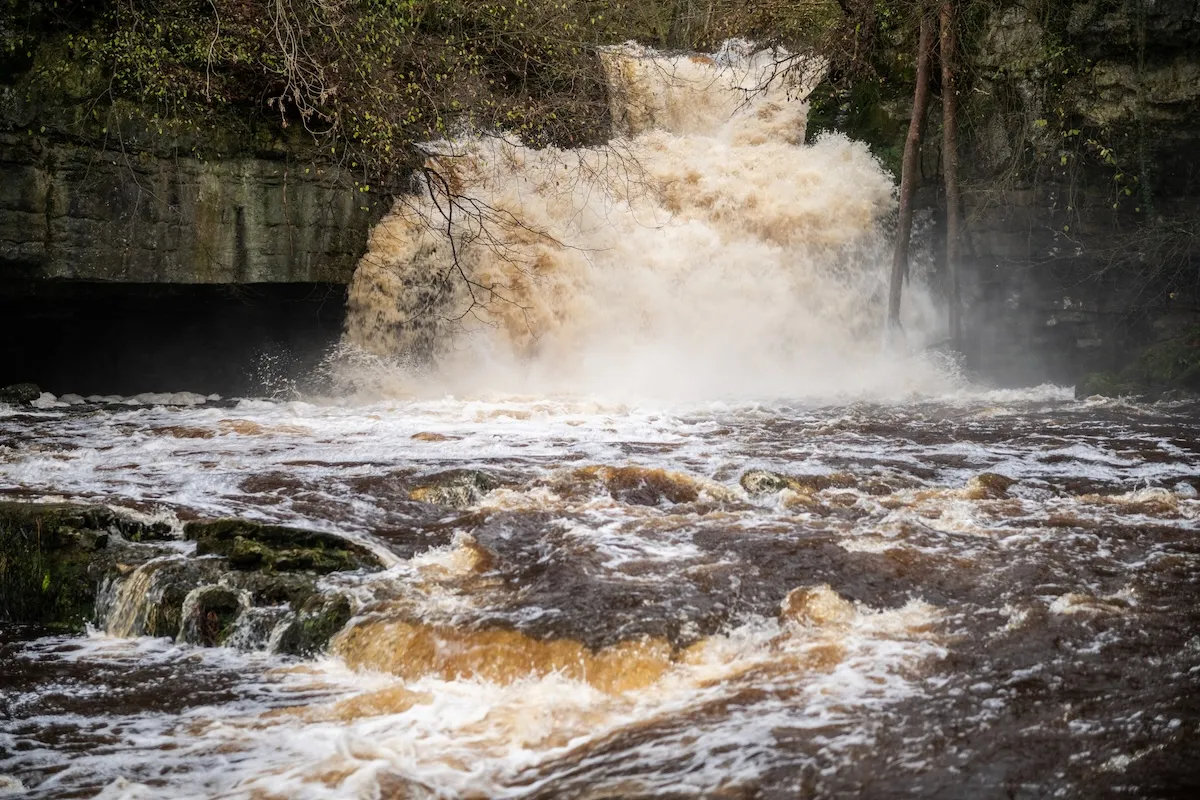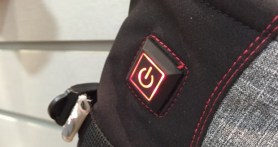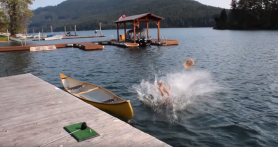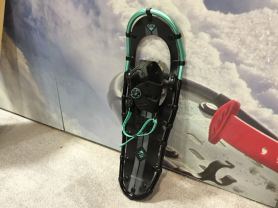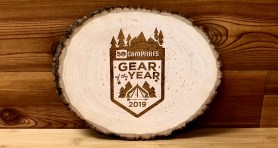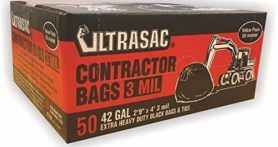

Campers come in many flavors. There are diehard purists who hike miles to a campsite, sleep on the ground, and cook everything over a fire started by flint and steel. On the other end of the spectrum are those who enjoy the luxurious accommodations of an RV with all the amenities. Still others enjoy simple comforts, but don’t want to spend and arm and a leg for a full-sized mobile home. Many of these folks fall into the “pull behind” category, so let us help you decide what camper is right for you.
Videos by Outdoors
Pull-behind campers come in a number of different styles. There is not a one-size-fits-all because of the wide variety in desirable features, weight, and size of vehicle needed to pull them. For instance, if you have a motorcycle you are not likely to choose a fifth wheel. So let’s explore what there is to choose from—largest to smallest .
Fifth Wheel
Average Cost:
$15,000 – $100,000
Length:
25 – 45 feet
Pros:
Luxury
Space
Comfort
Great handling on the road
Cons:
Price
Fuel economy
Special trailer mounting needed
The largest option is the fifth wheel pull behind. If you want a motorized camper with all the luxuries of home—without paying out the nose—this is a good option. Ranging widely in price, but hovering in the ballpark of $45k, these pull-behind campers often feature a full kitchen, queen-sized bed, bathroom, other facilities, and plenty of storage. Trailers range in size from roughly 25 to 45 feet in length, and can comfortably accommodate six people or more.
The downside to these massive, pull-behind campers is the fuel usage and the need to have a special hitch system mounted in the bed of your pickup truck. These hitches go for about $1000 and usually require a medium- or heavy-duty truck. If you’re looking at a fifth wheel, make sure your pickup can handle the weight.
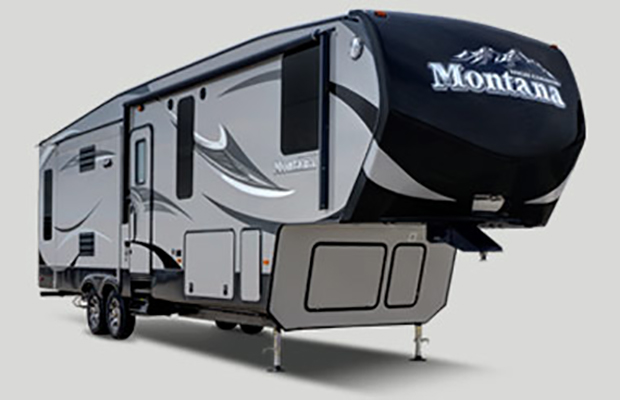
Fifth wheel trailer we love:
The Keystone Montana High Country is our pick due to its beautiful interior design, number of amenities, and lighter weight to comparable fifth wheel campers.
Towable Travel Trailers
Average Cost:
$8,000 – $60,000
Length:
12 – 40 feet
Pros:
Comfort
Size and style options
Cons:
Price
Most need hook-ups
Poor handling on the road
The next smallest in size is towable trailers. This type of camper wins for the most generic category. These pull behinds don’t require a special hitch. They usually don’t require a medium- or heavy-duty pickup truck, either. Also, you’re not consuming nearly as much fuel as a fifth wheel. There are a vast number of options in size, weight, layout, and options. Wins all around! However, there are some cons to smaller towable trailers, too. Often they don’t have a sanitation storage tank or fresh water storage so you’ll need to find places to hook up.
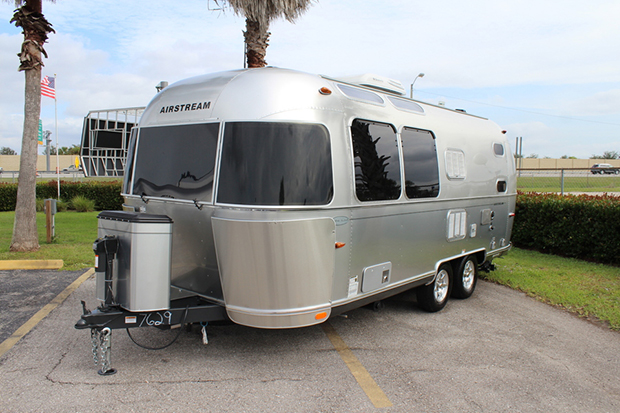
Towable Camper Trailer we love:
When it comes to American manufacturers, Airstream still has it. The Flying Cloud series offers a good amount of space for two to five people with all the necessary amenities for living comfortably at a campsite for a long time. Plus the sleek metal exterior is classic.
Teardrops
Average cost:
$3,000 – $10,000
Length:
7 – 15 feet
Pros:
Great fuel economy
Small and maneuverable
Less expensive
Cons:
Small
Fewer luxury options
Can only accommodate 1 or 2 people comfortably
These campers are great for towing behind just about any vehicle. Anything from a full-sized pickup down to a VW Beetle should be able to handle these pull-behind campers. The best things about teardrops are the lower purchase price, the fuel savings, and the easy maneuverability. The inside is very small with just a little more room than a 2 to 4 person tent. However, these campers keep you dry and bug free better than a tent. You can customize these campers, but space limits the amount of luxuries. The lower price point is nice for those who don’t care about having a full sized couch and a 50-inch television inside.
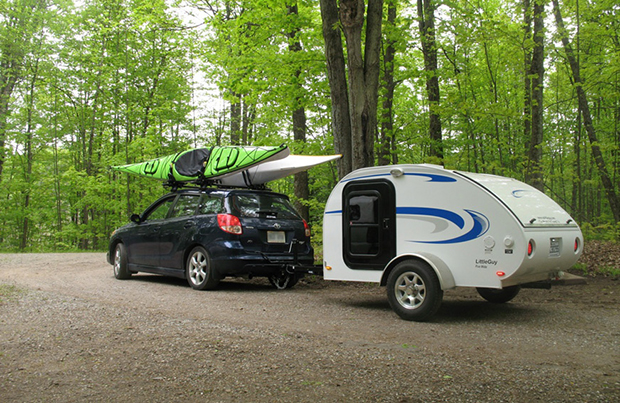
Teardrop camper we love:
Little Guy is probably one of the most well-known makers of teardrops. This is probably because they have the most options and customizations of this category.
Pop-Up Camper
Average cost:
$3,000 – $15,000
Length:
8 – 18 feet
Pros:
Great fuel economy
Small and maneuverable
Less expensive
Value does not depreciate quickly
Cons:
Set-up time
Not as durable as hard sided campers
Pop-up campers are great campers for sleeping a whole family while staying on a budget. Many have amenities such as a sink, propane stove, and built-in cable hookups. There are options of a hydraulic lift or a manual crank to open the camper. The nice thing about these campers is everything folds down into a roughly 4-foot tall box that can be towed behind any number of vehicles with a hitch. They even have smaller pop-ups that can be pulled behind a motorcycle. This leads us into our next category.
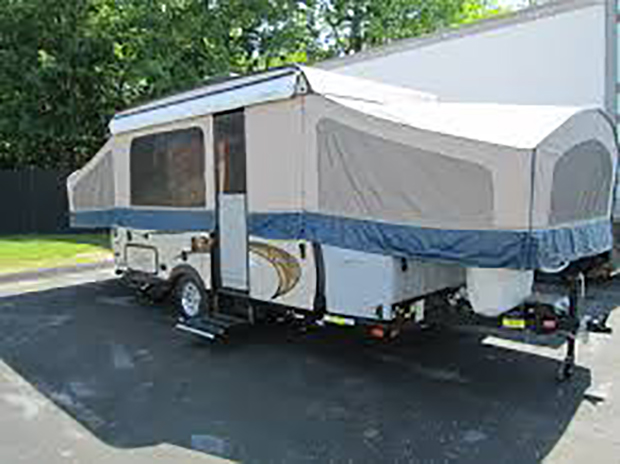
Pop up trailer we love:
The Coachmen Classic pop-up camper is our pick for the features you get for the money. And what camper review would be complete without mentioning Coachmen?
Motorcycle Trailers
Average cost:
$2,000 – $5,000
Length:
6 – 7 feet
Pros:
Great fuel economy
Fast setup time
Less expensive
Can be pulled by a motorcycle
Cons:
Very small
Few options available
Need a custom hitch mounted on your bike
Motorcycles offer a type of freedom cars and trucks cannot. What if you could take that freedom to the campsite and still have a comfortable place to sleep? You can with a motorcycle camper trailer. These rigs are very small, but offer a good amount of sleeping and packing space for their size. Motorcycles can only tow so much weight so the whole camper weighs roughly 300lbs. If you enjoy taking your bike to the most remote places while having a bed off the ground, this camper is for you.
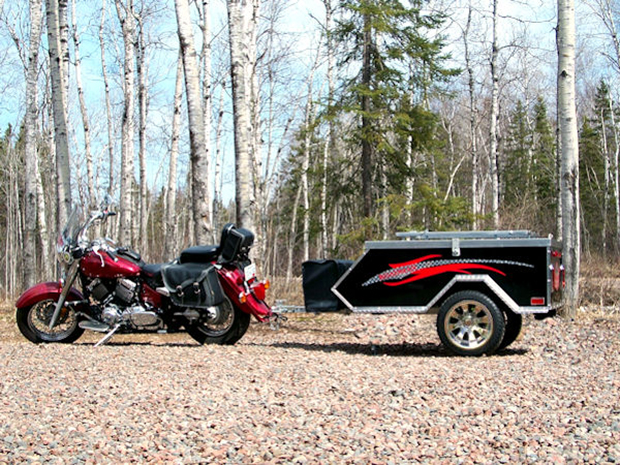
Motorcycle campers we love:
Roadman Campers is one of the most well-known makers of motorcycle campers. They offer great, lightweight towing that will not be a burden on your bike, but it still offers decent space for sleeping one or two people.
Honorable mention
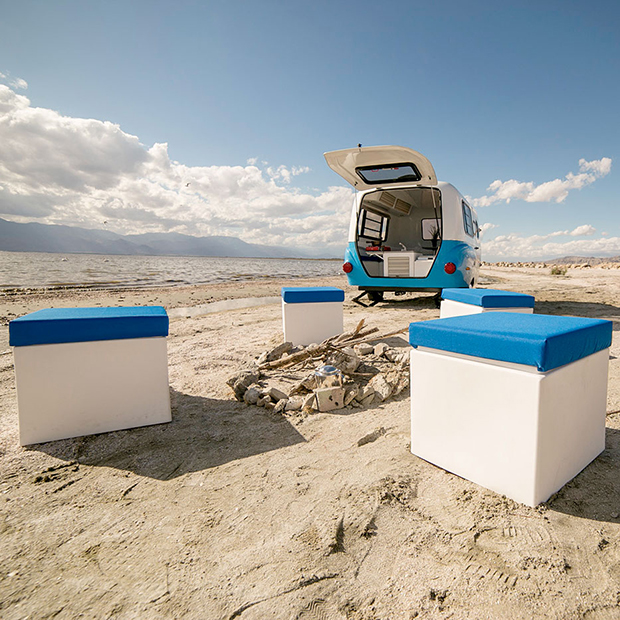
Innovation keeps coming and the cool new products never cease to amaze us. Happier Camper has developed the HC1, which has a customizable interior to make space for just about anything you want to do inside. Or, you can use the blocks inside as seats around the campfire outside.

